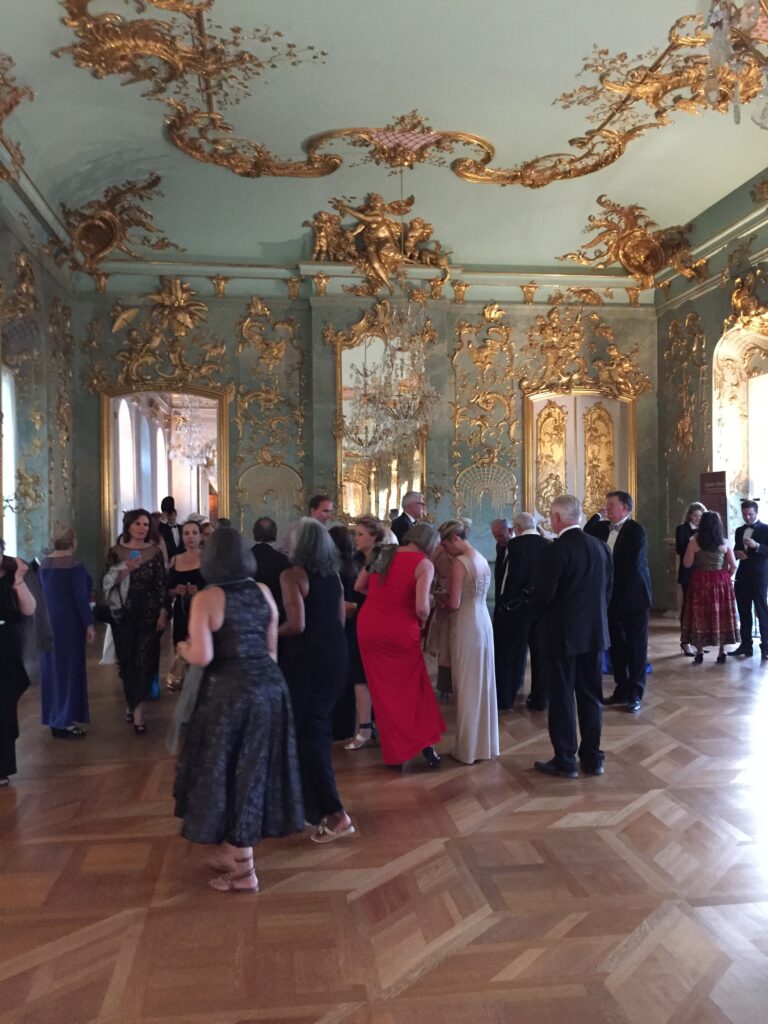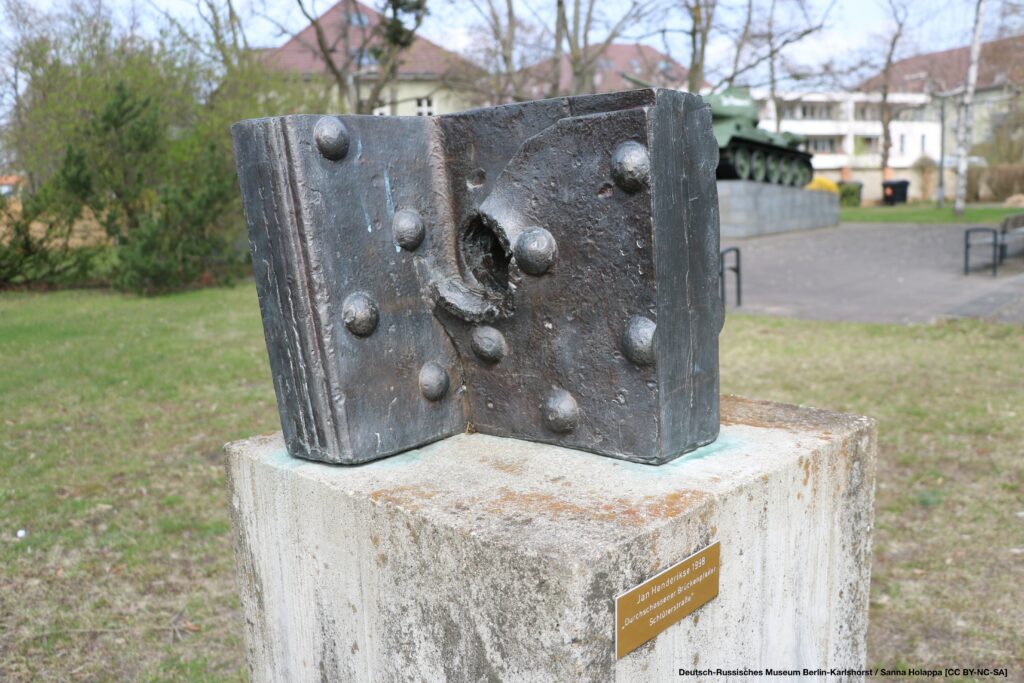
Berlin and its surroundings offer a fine line in historic tables.
We have the desk of polymath Alexander von Humboldt, friend of Goethe, that can be seen in the Märkisches Museum.
We have the table, around which the Truman, Churchill and Stalin sat deciding the future of post-war Berlin, Germany and Europe in 1945. This can be seen in Potsdam.
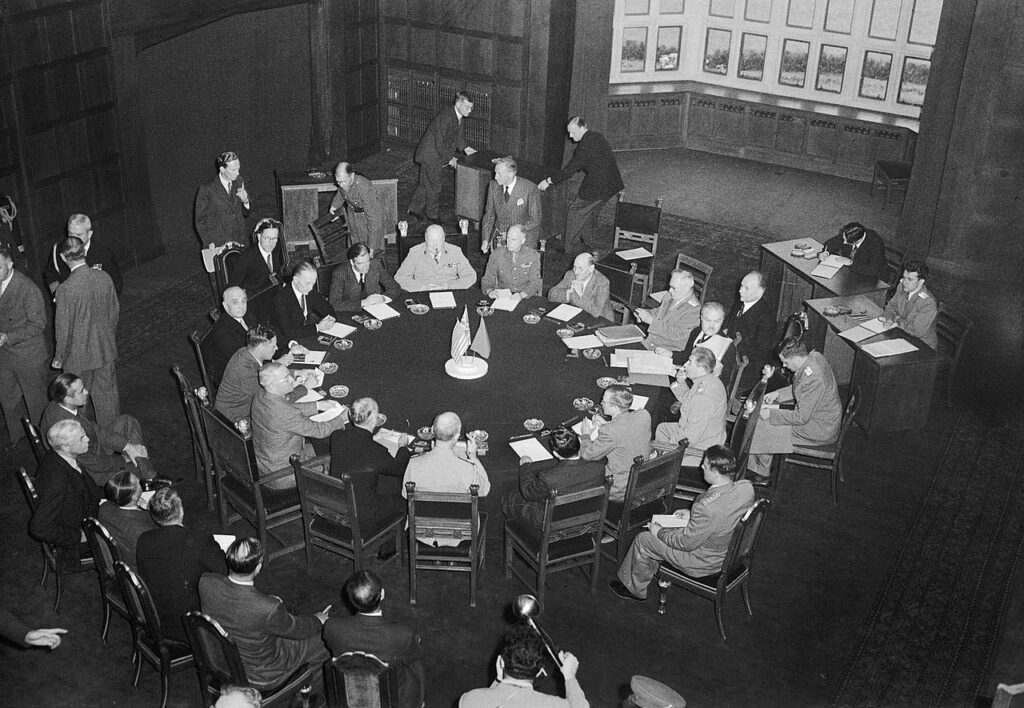
And finally, there’s a table in the Berlin district of Karlshorst. This one is on show in the venue where the unconditional surrender of Nazi Germany was signed by Marshall Keitel on 8th of May 1945.
But it’s not the table in Karlshorst we’re are interested in here. It’s the sculpture in the garden of what is now the German Russian Museum.
It is has featured in the garden since 2005, and is called ‘Shot-through bridge stanchion Schlüterstraße’.
Catchy.
It’s a bronze work by a Dutch artist called Jan Henderikse, and is from 1998.
The actual cannon hole and stanchion depicted in Henderikse’s piece do really exist. They can be still seen today. They are a testament to the violence of the battle for Berlin here on the 28th April 1945.
Have a look here at my short video about this Berlin battle field damage for some details and location. Then, if you’re passing – you can check it out, or I can show you on this tour
There is only one slight problem with the sculpture. It’s name.
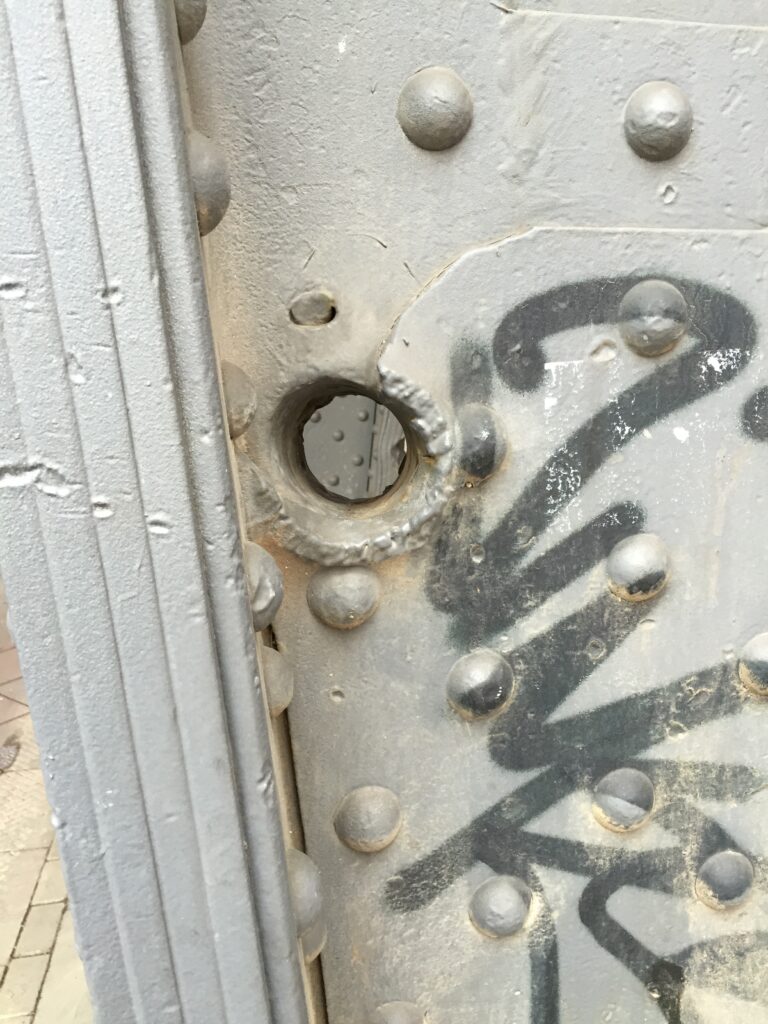
It’s not on Schlüterstraße. It’s on the train bridge crossing Leibnitzstraße, corner of Kantstraße, admittedly only a block west.
But still a near miss.

Berlin and its surroundings offer a fine line in historic tables.
We have the desk of polymath Alexander von Humboldt, friend of Goethe, that can be seen in the Märkisches Museum.
We have the table, around which the Truman, Churchill and Stalin sat deciding the future of post-war Berlin, Germany and Europe in 1945. This can be seen in Potsdam.

And finally, there’s a table in the Berlin district of Karlshorst. This one is on show in the venue where the unconditional surrender of Nazi Germany was signed by Marshall Keitel on 8th of May 1945.
But it’s not the table in Karlshorst we’re are interested in here. It’s the sculpture in the garden of what is now the German Russian Museum.
It is has featured in the garden since 2005, and is called ‘Shot-through bridge stanchion Schlüterstraße’.
Catchy.
It’s a bronze work by a Dutch artist called Jan Henderikse, and is from 1998.
The actual cannon hole and stanchion depicted in Henderikse’s piece do really exist. They can be still seen today. They are a testament to the violence of the battle for Berlin here on the 28th April 1945.
Have a look here at my short video about this Berlin battle field damage for some details and location. Then, if you’re passing – you can check it out, or I can show you on this tour
There is only one slight problem with the sculpture. It’s name.

It’s not on Schlüterstraße. It’s on the train bridge crossing Leibnitzstraße, corner of Kantstraße, admittedly only a block west.
But still a near miss.
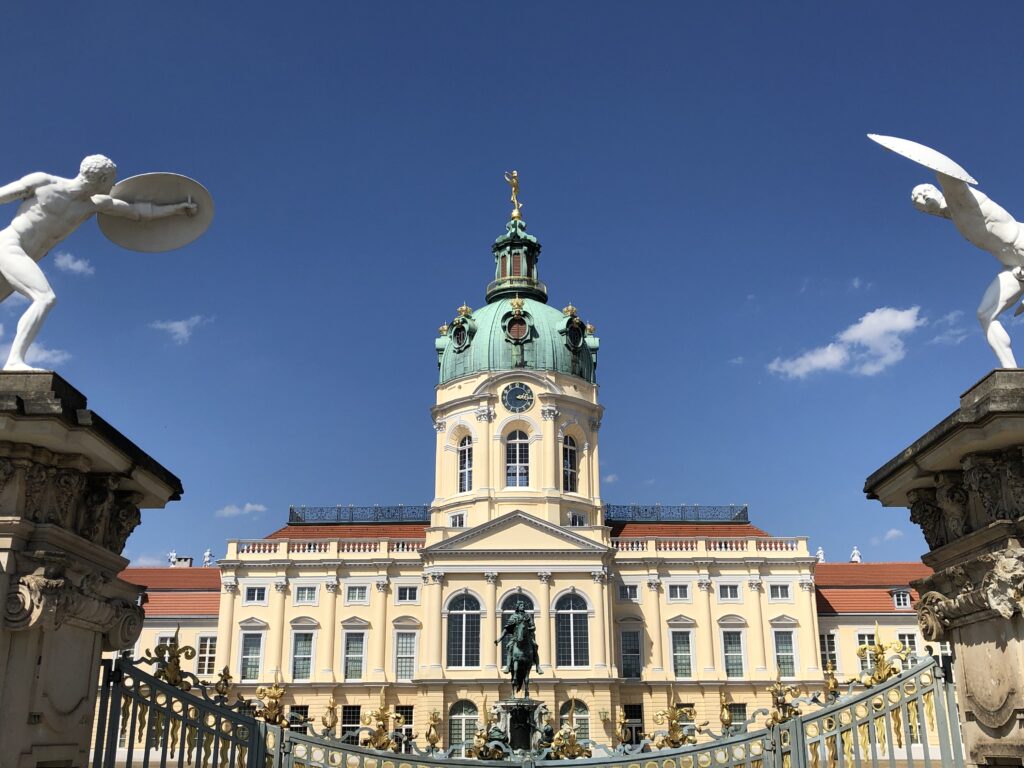
Time is short for most visitors to Berlin. This means they understandably focus their visit on the historic city, the side of town that became east Berlin – the former Soviet sector.
This is a shame, as they miss out on something rare in west Berlin – the spectacular Charlottenburg Palace.
Why rare? Because the ravages of war-time bombing, and equally importantly, the politically driven demolitions after the war removed Berlin’s main city palace and other historic buildings.
The Charlottenburg Palace was burned out by 1945, but restored to its (almost) former glory in the 1950s, and is the largest Prussian palace still standing in Berlin today.
Opening originally in 1699, it can be seen as a symbol of Berlin’s early 18thcentury ‘coming of age’ as the capital of Prussia and a ‘European city’. This step would set Berlin on a path, rising to the status of ‘world city’ by the end of the 1900s, just then to fall so far in the 20th century.
Today, the district of Charlottenburg is the heart of western Berlin once more. It’s a young district of city, built first only in the mid 19th century as a bourgeois leafy villa suburb. At its heart is still the famous Kurfürstendamm shopping mile and Zoological Garden.
At the time of the original conception of the palace, Charlottenburg itself was still countryside, basically just a village called Lietzow, by a small lake. But here was available space, close to the city, and that caught the eye of the man who would be king.
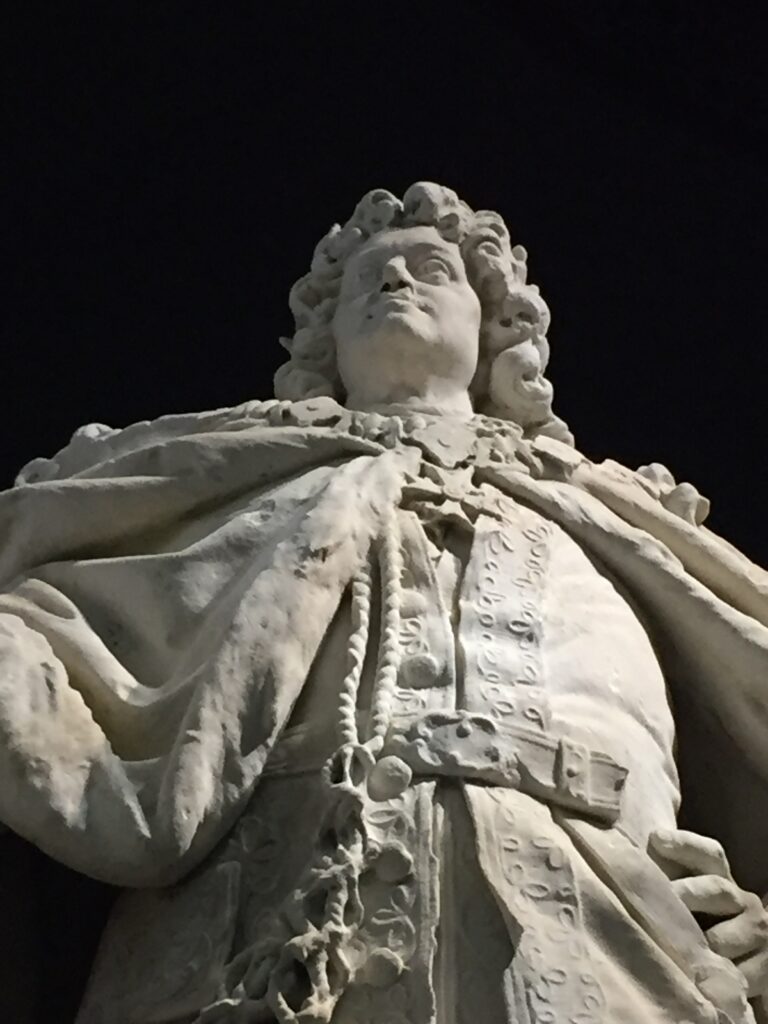
The palace was built by the Hohenzollern ruler of Berlin and Brandenburg, then the Elector Frederik III. Then he became King Frederik I.
His family’s centuries long ambition for parity with the older, grander royal houses of Europe drove him to declare himself King in Prussia in 1701. Prussia proper was an enclave in what’s now western Lithuania. This was territory Berlin controlled, but was importantly beyond the influence of Frederik’s powerful allies, and a place they couldn’t deny him being king ‘in’.
This ambition can be seen in the style of the palace itself. King Frederik I had it built for his second wife – Sophie Charlotte of Hannover. The surrounding district is named after her. She died 5 years after she moved into what was essentially her new, summer residence.
Designed by architect Nering and expanded by Eosander, the Charlottenburg palace was first inspired by the famous Schönbrunn Palace in Vienna, and its gardens by Versailles.

The gardens themselves hide some jewels not be missed and are worth a wander. There is the Belvedere (lit. ‘nice view’) a tea house designed by the builder of the Brandenburg Gate – K. Langhans. There is the beautiful neo classical tomb – the ‘Mausoleum’ – containing the sarcophagi of King Fredrik Wilhelm III and his wife, Queen Luise, a Berlin legend who stood up for Berlin’s pride after it had been defeated by Napoleon. Her son was King Frederik Wilhelm IV, his heart is buried at her feet. Here too lie the first German Emperor Wilhelm I and Mrs Emperor.
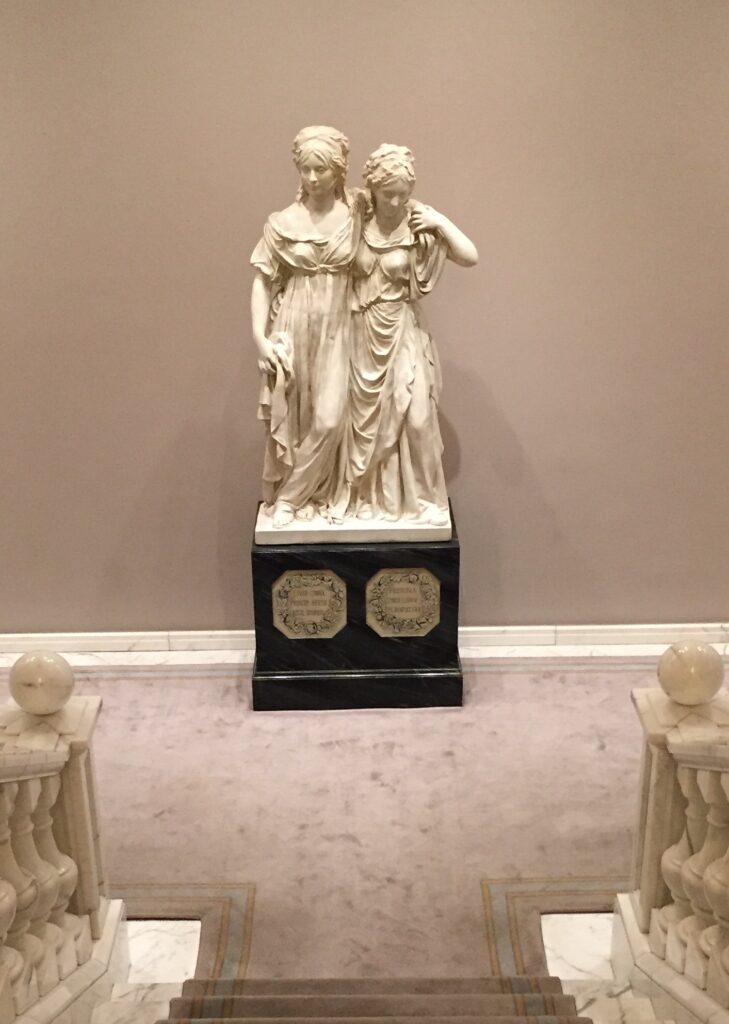
Perhaps the most famous thing associated with the Charlottenburg Palace is the legendary Amber Room.
Conceived and built at the same time as the Palace itself, it consisted of over 400 tons of Baltic Amber, carved, bejewelled and beset with paintings, to be seen best in candlelight. This spectacular creation was the wall panelling to end all wall panelling.
Originally, it was to adorn the Charlottenburg Palace, but it was eventually built into Berlin’s main Town Palace, recently reconstructed on today’s Museum island in the city centre. Having been gifted generously to Tsar Peter the Great in 1716, it disappeared from St Petersburg during WWII.
The search for its whereabouts are still ongoing, and the stuff of Indiana Jones (check this out for an overview)
Coming to Berlin? – let’s explore the Charlottenburg Palace, it can be combined in a Baltic Cruise Shore excursion to Berlin – we can make our starting point (check out my Berlin tours).
